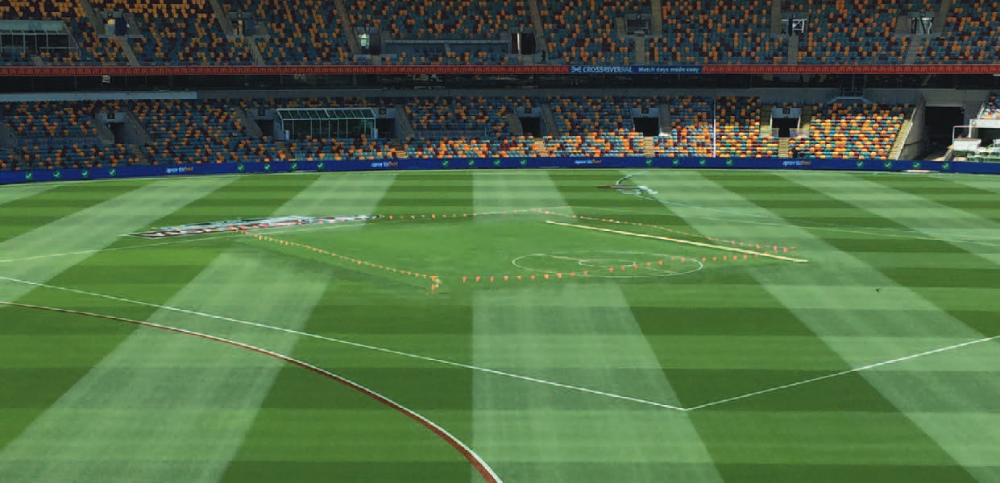Selecting Fungicides for Prevention Without Regulation in Golf
The triazole fungicides sit within the Demethylation inhibitor (DMI) Class – Group 3 in our FRAC tables. They target sterol biosynthesis and sterols are essential for membrane structure and function i.e. essential for cell wall structure. The triazoles in combination with the strobilurins have formed the backbone of many fungicide programs on golf courses for many years but there has always been an element of caution around triazole use mid summer.

The understandable appeal of the trizoles
Some of the triazoles are exceptional on dollar spot and some ERI diseases e.g. spring dead spot, as well as other diseases that are highly prevalent and / or highly destructive. They have good speed of activity and have been a traditional go-to when disease appears to be advancing quickly. Responsiveness has always been a reliable trait of the class and the combination of predictability and a bit of a forgiving nature for less than ideal applications made them a reassuring tool. Unfortunately some of their strengths are around diseases with windows of activity occurring through peak heat. Depending on who you speak to (and their experiences) using some triazoles in those windows can confer undesirable levels of growth regulation. Whether you are strong or moderate advocate of this phenomenon the fact is the family are known for it. Case in point is a family member called Paclobutrazol. As a fungicide it was pretty ordinary – but as a PGR was rather impressive. Important point here though is whilst there is a strong inclination to use the triazoles at these times, the advent of further chemistry classes e.g. SDHI’s and the prudent use of older multi-site chemistries and some newer work horse contacts does allow us to navigate around some of the issues of concern without compromising our defences. We can still develop effective preventative programs that are strong rotational plans conferring the level of resistance management we should always be seeking to look after our chemistries for long term use. In doing so we can actually save the triazoles for further use elsewhere – still playing to the inherent strengths of the group.
The SDHI’s and specific situations where they fit as Triazole alternatives
There are two windows of opportunity worth identifying here. Dollar spot from December to February is one window where there is a real fit for the alternatives. The SDHI class of chemistry for example has thrown up some candidates that offer a genuine combination of efficacy and broad spectrum with no growth regulation. These were a wonderful addition as they have a distinctly different Mode of Action (MOA) meaning cross resistance back to the big traditional classes used extensively prior was unlikely, and the better candidates would take care of many foliar pathogens like dollar spot, helmo and anthracnose concurrently, but if applied smartly would manage brown patch as well. Traditional triazoles lacked on activity on Pythium so the fact the alternatives don’t either keeps us net neutral.
If the SDHI’s were used in this period judiciously, and were alternated with multi-site options like Chlorothalonil (e.g. chloronil Pro), or other MOA chemistries such as Fludioxonil (Medallion) and Fluazinam (various) you actually start to see a strong program developing.
If working down this path, we also see a program emerging where both strobilurin and triazole use can be contained to no more than a third of a program each yet still targeted at sensitive times such as spring and autumn renovations, Christmas week and the late summer Spring Dead Spot window for surfaces employing couch grass. This last spot in particular is a second specific window where the sensitivity of the growth regulation can be addressed again.
Many anecdotal stories exist for the old EC propiconazole products pulling up growth in couch surfaces. Older bowling greenkeepers usually have a story or two here. The modern day sensitivity picked up in golf is the ultra dwarf couch greens and how they respond in autumn when propiconazole forms part of the Spring Dead Spot program. It seems to be genuine but equally can be managed without necessarily excluding the group. The Triazoles still stand out as the high performers against ERI diseases and as such should still feature for SDS, but, an alternate approach is now possible that is worth considering.
SDS programs in northern NSW and QLD always had the challenge (I’d call it benefit) of a longer autumn. Great for lifestyle but sometimes knowing in advance where the critical crossover would be for slowing soil temps and root growth versus the infection potential of the SDS pathogen became an issue. To cover this sometimes three application strategies were employed to ensure the window wasn’t missed.
For this strategy the triazole use would often be application 1, but mixtures or straight strobilurins became application 2 and 3 to step away from regulation potential. The SDHI class produced some candidates that somewhat suprisingly had great performance against the SDS pathogen in addition to their foliar spectrum. So with this comes the opportunity to retain application 1 from a triazole to get some benefit from their inherent strength against SDS – but make application 2 and 3 sequential treatments of the SDHI per label recommendations. Reports from the US on the performance of Velista Turf Fungicide on SDS since commercialization have been very positive. If regulation of your ultra dwarf greens from triazole use has proven to be an issue for you, maybe give this alternative a try.
How Nuturf can help you
Nuturf are well versed in the both historic fungicide programs across the country, and the fit and feasibility of adopting new approaches.
We have the team of territory managers to address all our customers needs in terms of knowledge and geography, and through our vast supplier networks and strong technical capability can help you piece together approaches suitable for your site.
We understand the need to combine disease prevention and turf health, and can help you plan specific product sequences and combinations that optimize the outcomes you can achieve.












